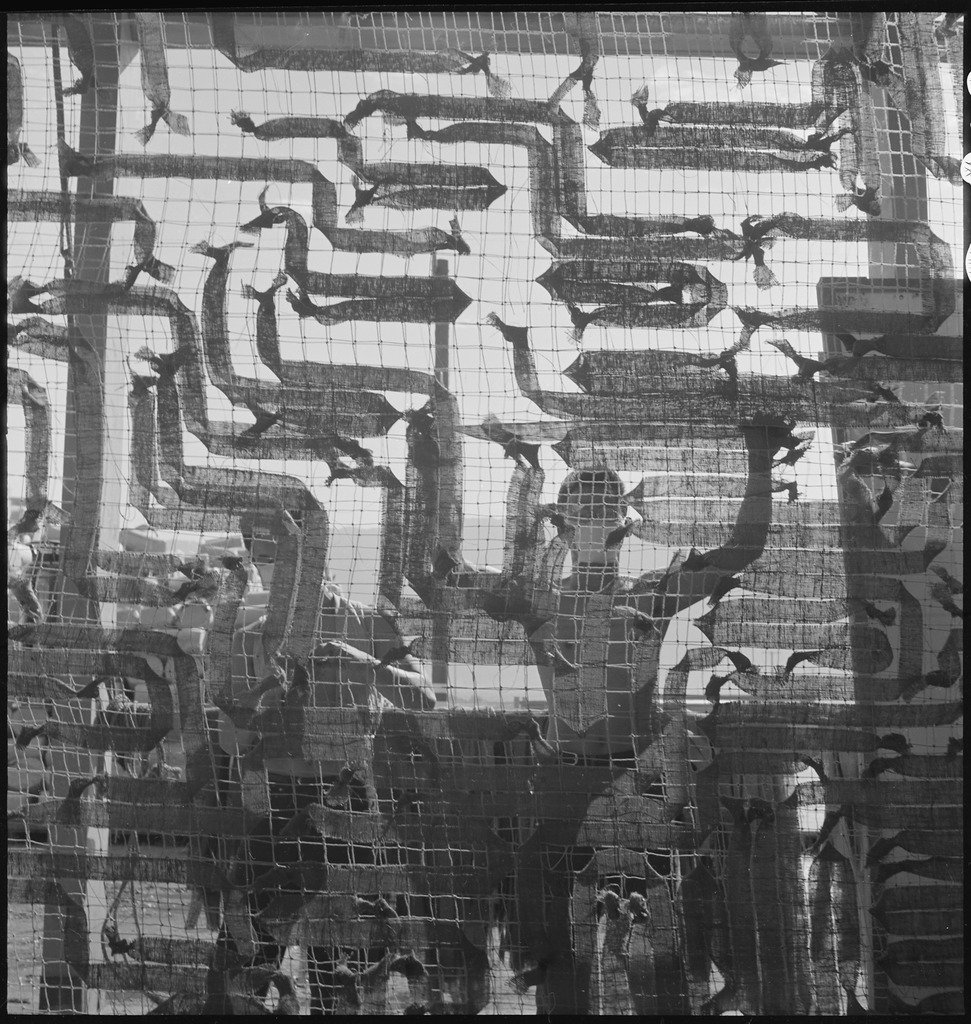









In Camouflage, 21’ x 22’ x 7’, handmade paper (flax, abaca, cotton, kozo, and kudzu), handwoven cotton and wool, wood frame, 2024
part of Rising from the Sifting Screen, at Wofford College, Spartanburg, SC
photographs by Michael Webster
Roosevelt’s Executive Order 9066, issued on February 19th, 1942, led to the incarceration of roughly 126,000 Japanese American citizens. These families were given less than a week to pack, sell their businesses, or find safe places to store their belongings; although impossible to calculate, it’s estimated that between $1-4 billion was lost.
The United States influenced similar policies in many other countries, including Canada, which sent 23,000 Canadian Japanese to work camps in the mountains. Secretary of State Cordell Hull wanted to have ready hostages to exchange with Japan, and had Latin American Japanese deported from countries throughout Central and South America to secret detention centers in the United States separate from those for Japanese Americans. These Latin American Japanese were refused to be sent back to their families and businesses after the war, instead deported to Japan.
There were labor programs throughout these camps, including four camouflage net factories for the United States military. Workers were paid around $10 a month, whereas factory workers outside the camps would average $150 monthly. The factory at Manzanar produced roughly 6,000 nets a month.
The impulse to make this in many ways was really simple. I wanted to see something to the scale of these archival photographs, that mirrored and honored this labor that was kept a secret from the public. I wanted my body to tend to something slowly, and for the first time I had to negotiate bringing others into that process.
In researching for this piece, I found all the things we already know, but with all the details that are so conveniently lost. The ways that Indigenous reservation lands were used as concentration camps, and how Dillon Meyer (as WRA Director and then Director of Indian Affairs) used the relocation of Japanese Americans as a rehearsal for relocating 200,000 Indigenous individuals off reservations to major cities in the 1950s-70s.
If you are curious to know more, I recommend Densho.org, Ann Kaneko’s film Manzanar, Diverted, Valerie Matsumoto’s Farming the Home Place, and Richard Drinnon’s Keeper of Concentration Camps.
http://lars-shimabukuro.com/s/In-Camouflage-Statement.pdf
Download the statement for In Camouflage above. The left and right sides of the document are read separately.
This piece could not have been accomplished without the support of many, especially:
Morgan Papermaking Conservatory - Cleveland, OH
Fiberhouse Collective and Kudzu Culture - Asheville, NC
Township10 - Marshall, NC
ACRE Projects - Chicago, IL
School of Human Ecology, Design Studies Program - Madison, WI
Support in folding, unfolding, scaffolding, and tying roughly 2,340 knots:
Michael Webster, Kyla Moore, Ian Danner, Noa Rickey, Oscar Soto, Youmi Efurd, Rebecca Forstater, Maggie Genoble, Lyrical Gist, Olivia Pechin, Carmen Bunche
